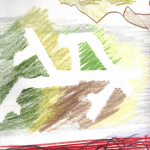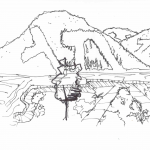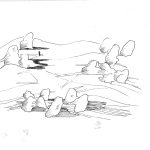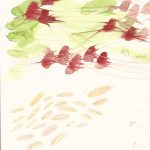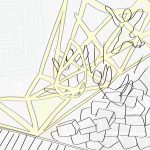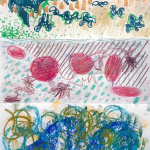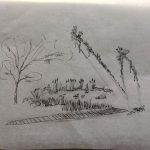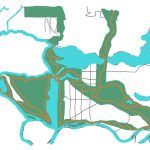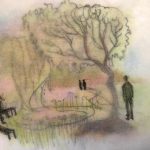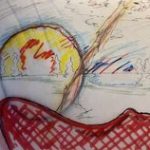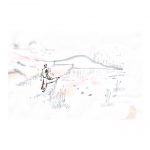introduction
As landscape architects, we are often tasked with designing landscapes that attempt to evoke a specific experience or emotion from its inhabitants. This exercise uses gestural, abstract mark making to represent a chosen emotive word, then attempts to translate the composition into landscape. I position this exercise opposite to the highly rationalized approach we often take to constructing landscape. Rather than starting with a list of programmatic elements to place in plan view, we use gestural fields as a starting point for an on-the-ground experience.
Desired outcomes: confidence, efficiency, intuition
Methods: de-skilling, emotive drawing
materials
- 1x letter size paper
- Various coloured drawing media (pencil crayons, pastels, paints, markers, etc.)
- Trace paper
- Pens or fine liners
instructions
- From the following list, select one emotive word that you’d like to try expressing: artificial, cavernous, claustrophobic, compressive, desolate, dramatic, expansive, familiar, flow, gentle, geometric, hospitable, industrial, pastoral, rhythmic, rugged, sacred, structured, sublime, tranquil, urban, vast, violent, wasteland, wild
- On your letter sized paper, create three small emotive gestural fields using any coloured drawing media. This means a composition that is abstract (does not represent anything “real”) and expressive. Use colour, texture, shape, and media to convey your chosen word.
- Identify the gestural field you think is most successful. Lay trace paper over top and trace the predominant linework/shapes.
- Now, imagine the composition as a perspective view of a landscape. Assign elements (built or natural) to your marks. Topography, materials, architecture, inhabitants, natural forces, etc. may all be considered, but do not add humans. Sketch these elements in pen on another layer, resulting in a landscape perspective scene.
- Finally, use the given figures to populate the landscape. Experiment with placement and scale of humans.
reflection questions
- What application might abstract composition have in your everyday design practice?
- Compare the success of your gestural field and your speculative landscape perspective in conveying the word you chose. Is one more successful than the other? Why?
- What advantages are there in beginning with a perspective view to construct a landscape? In beginning with an abstract emotive composition?
